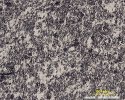disclaimer: all opinions are honest, based on my own experience, and liable to be uninformed about Your experience. so don't count that against me.
Arkansas has rocks, in them thar hills, and always had.
Noviculite has been used to mean several things, but it's generally a class of rocks, not a single sort.
Any rock that'll cut steel has something in it harder than steel.
The belgian rocks have volcanic ash, superfine silt, and microscopic garnets.
Some few of the arkansas stones have a similar composition, but much less so and much less evenly distributed.
I have a Buck Washita stone, that's so much garnet you could cut and polish it for a (semiprecious) gemstone, in one largish streak.
Hard enough to hone a buck knife, i'll give it that. But in general a lousy stone.
The reason to use oil is it makes a lousy stone less lousy.
It doesn't rust fine steel, like water, and it protects the stone from gouges. So it's convenient for a couple reasons.
But the only reason you
want oil when you're sharpening, is to make a crappy stone work a little better. Not to say you can't use it. .. you can. but it'll NEVER work better'n water on a good rock. Any good rock. (synthetics aren't rocks).
Now the first Pike stones came in two flavors. #1 & #2..
#1 stones were not labeled, they were boxed free, and the label was in the box. You had 2 good sides. They were sold as Lily White #1 Washita ..
the stones with a blemish had a label glued on the blemish side. this blemish is by todays (lower) standard irrelevant. a tiny blob of color was enough to make that the 'bad side'.
A standard (approximate) size was 8x2x1 inch for #1 stones, and more often, 6x2x1 inch (approximate) for #2 stones. These are extreme generalities and only rough guidelines.
Frequently early Pike stones were cut thicker than 1 inch.
Later stones were mined by Norton and of these, the quality was at first equal. As the easily found veins were mined out, standards of cosmetics and 'grain' (fine ness, included harder rocks, etc..) slipped.
You could still get good stones up into the 70s .. SOME times.. and even today, individual rocks may well be as good as the best ever mined.
But the AVERAGE rock has gotten trashy as heck.
And we're talking about the real true 'soft arkansas' which is a cream colored rock. Called white. Fine waterstone.

Then there're other kinds of Arkansas rocks. They have Nothing to do with the Lily White, or the #1 Washita, that built the rep for Arkanas stones. The black (soft) which is anywhere from mud colored, to grey, to olive, to charcoal, to true shiny blue black .. is a slipstone. Shapeable. THE rock to work on gouges (barring belgians, again)..
It's hard'ern heck dry, dense as a bugger, a HEAVY rock for its size and almost an oily feel. you'ld not think it was sedimentary. it is a surprise to find out it's mud, squished.
I'm only calling it SOFT because it looks one heck of a lot like the flint rock that's about 4x as hard. Still black. Does Not Make Mud, Wet.
That's a variant of the translucent. Grey, White, Clear, Black, they're all the same thing. Different grades of course, just like different colors. you may find a clearish one that is great, or a black or grey.. it's THAT rock you're talking about, not the piece 6 inches away which may be junk.
But they are HARD flinty quartz composition, and it doesn't matter if you oil em, spit on em, or use em dry. They is Very Hard Rocks. You aren't gonna gouge em. Not without a deliberate malicious effort.
So color doesn't matter, only it does. Usually.
White arkansas are the standard, good as they get if they don't have inclusions. (hard specks).
Black (soft (of which some are olive, dun, brown/red, etc)) arkansas are fine polishing stones. If you use one as your main stone, you like hair splitting sharp.
Translucent (of which some are black) is WAY harder'n the other two, and aren't good for much.
They aren't agressive enough, they're TOO hard, and best place for em in in cleaning dies and fine machine tool sharpening, working with the very hardest steels.
Now they're fine rocks, don't get me wrong. I don't mean they're junk. I mean most folks don't need one for anything. You can get a ceramic stone and do the same job, nearly.. and yes, for flat chisels, the REAL good ones, ok, they have a place. But it's fersure not a kitchen stone.
So that's probably more'n you wanted to know and it's a rough overview. But one thing to count on, every rock is what it is. Reputation means nada. If you want guarantees in advance, buy a fine India stone, and that's my advice to everyone anyway. Do what you can with the synthetic.
your rocks will be glad. :thumbup:




